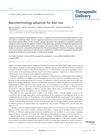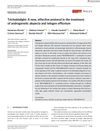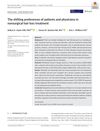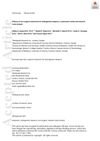TLDR Combination therapies for androgenetic alopecia are more effective, but more research is needed for safe, standardized treatments.
Androgenetic alopecia (AGA) is a common hair loss condition influenced by dihydrotestosterone (DHT) and genetics, affecting both men and women and associated with broader health issues. While traditional treatments like finasteride and minoxidil are effective, new therapies such as dutasteride, androgen receptor antagonists, mesotherapy, and low-level light therapy (LLLT) with red LED light are showing promise for better outcomes and fewer side effects. The review suggests that combination therapies tend to be more effective than single treatments, but emphasizes the need for further research to establish standardized treatment protocols and confirm long-term safety.
 January 2020 in “Elsevier eBooks”
January 2020 in “Elsevier eBooks” Plant-based chemicals may help hair growth and prevent hair loss but need more research to compete with current treatments.
 27 citations
,
August 2018 in “Therapeutic Delivery”
27 citations
,
August 2018 in “Therapeutic Delivery” Nanotechnology could make hair loss treatments more effective and reduce side effects, but more research is needed before it's available.
 1 citations
,
January 2021 in “Dermatologic Therapy”
1 citations
,
January 2021 in “Dermatologic Therapy” Trichobiolight effectively treats hair loss with 82.5% success.
 7 citations
,
September 2020 in “Journal of Cosmetic Dermatology”
7 citations
,
September 2020 in “Journal of Cosmetic Dermatology” Minoxidil and Finasteride are the most popular hair loss treatments, with rising interest in other options, and economic or health crises can change what treatments people prefer.
 40 citations
,
November 2020 in “JAMA Dermatology”
40 citations
,
November 2020 in “JAMA Dermatology” Finasteride may cause suicidal thoughts and mental side effects, especially in young people with hair loss.
 54 citations
,
May 2018 in “Journal of The European Academy of Dermatology and Venereology”
54 citations
,
May 2018 in “Journal of The European Academy of Dermatology and Venereology” Low level laser therapy works best for hair loss, followed by PRP, finasteride, and minoxidil.






